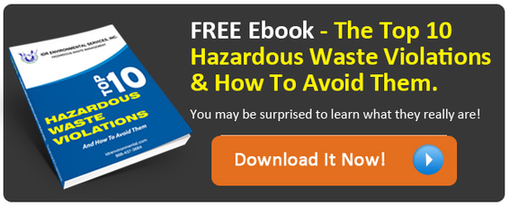Poor Chemical Waste Management Process and Expired Chemicals Can Lead To Heavy Fines!
Small colleges and universities are becoming targets for government regulators that deal with hazardous waste management for regulatory fines. The EPA and the state hazardous waste regulators such as the Department of Toxic Substances Control (DTSC) in California are serious about cleaning up the environment and targeting hazardous waste polluters. University budgets are being stretched thin and institutions of higher learning with science and engineering departments need to take a look at their operations to protect those budgets from fines and expensive remediation fixes. College research facilities, science laboratories and classrooms are particularly vulnerable. Managing the laboratory chemical waste removal process is becoming a challenge in an increasingly hostile regulatory environment.
Enforcement Activities on the Rise
Local government agencies tasked with regulating the hazardous waste disposal laws have been actively going after universities, school districts and research and development facilities for violations of hazardous waste disposal. Over the last several years, West Virginia University, the Mayo Clinic and a disposal company serving public schools in Rhode Island and Massachusetts have all received fines and escalating costs related to cleanup of hazardous waste involving laboratories. Typical violations include:
- Improper storage of hazardous waste.
- Improper management of expired chemicals.
- Failure to make a hazardous waste determination.
- Lack of a contingency plan
Science Labs Are Subject To Hazardous Waste Laws
Research laboratories like all generators of hazardous waste are subject to the Resource Conservation and Recovery Act of 1976 (RCRA). RCRA established the “cradle to grave” requirements for the treatment, transportation, storage and disposal of hazardous waste in the United States. As such, laboratories like all businesses are required to track chemicals from the second they enter their sites, and with best practices inventory management, to know where they are and when they expire. Hazardous materials are used and recycled until they are put into containers waiting for pickup by the chemical waste company.
Solutions
For universities that run laboratories, these challenges are requiring "Science Department Heads" to evaluate the process that their organizations are using to run their facilities. This means reexamining methods for handling high-risk functions such as the disposal of hazardous materials. It is crucial for leaders to evaluate these three threats when determining how to handle critical hazardous waste materials:
- Threats to people: Carelessness or inexperience can turn a hazardous waste storage and collection area into a danger zone. A deadly chemical reaction, a quick-spreading fire, or a treacherous spill can cause injuries to lab staff or first responders.
- Threats to the bottom line: As discussed previously hazardous waste disposal requires compliance with stringent federal and state regulations. Failure to properly follow and stay up-to-date with the law could result in heavy fines in the thousands to tens of thousands of dollars.
- Threats to research and innovation: Organizations may currently require their scientists to manage part of the hazmat disposal process, including handling waste and consolidation processes. This can be a time waster for research staff and a major distraction from valuable research time. It’s many not be a good use of a valuable resource, and can ultimately result in a loss of crucial research.
Outsourcing
Many institutions are finding cost savings by outsourcing their hazardous waste management functions to hazardous waste disposal companies. When selecting a vendor, colleges and universities need to make sure that companies are properly licensed and have the expertise and experience needed to successfully handle the cradle to grave requirements of RCRA.
Many laboratories are finding that outsourcing this process can deliver sustained cost savings, increased productivity for researchers and limited exposure to fines and violations. For more information on hazardous waste management download our EBook “The Top 10 Hazardous Waste Violations & How To Avoid Them.”


Comment